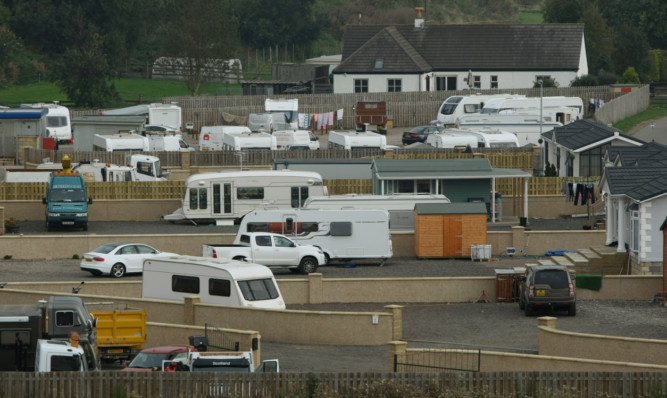Concerns have been raised about larger groups of Travellers setting up unauthorised sites in Angus.
A new report states that the region has seen more “economic Travellers” in the past 18 months which has had a “major impact” for communities.
Last year there were more than 40 separate unauthorised encampments of Travellers in Angus. Between January and July this year there were 22 unauthorised camps in the county.
The situation was so bad in Forfar last year that the then community council chairman Isobel Ross said action needed to be taken to prevent the town turning into “boulder city”.
The new report by the council’s strategic director (communities) Alan McKeown states: “These encampments have varied in size, duration and impact on local and community life.
“Whereas Angus has in the past attracted more traditional Travellers, across Scotland there is a current upswing in what is being referred to as ‘economic Travellers’.
“Angus was exposed to these much larger groups in 2014 which resulted in major impact for the local communities and supporting agencies.
“As such, the Strategic Gypsies/ Travellers Group agreed to a review of policy and procedures being undertaken which would outline directorate, business unit and agency responsibility in the management of unauthorised encampments of Gypsies/Travellers in Angus.”
Angus Council is now planning to update its policy on how it treats unauthorised encampments for the first time since 2002. The communities committee will be asked to approve the new document tomorrow.
The previous policy did not take account of guidance issued by the Lord Advocate to procurators fiscal in 2004 which stated: “There is a presumption against prosecution in the public interest where the sole issue in relation to an encampment is the physical occupation of land by Gypsies/Travellers”.
The new policy states that Angus Council will not actively seek to “immediately remove an unauthorised encampment” on its land unless it is a site of scientific or environmental interest or a site where pollution could damage water courses.
It would also start eviction proceedings when the encampment is in an area with toxic waste or ground pollution, adjacent to the verge of a road or in proximity to a railway line.
